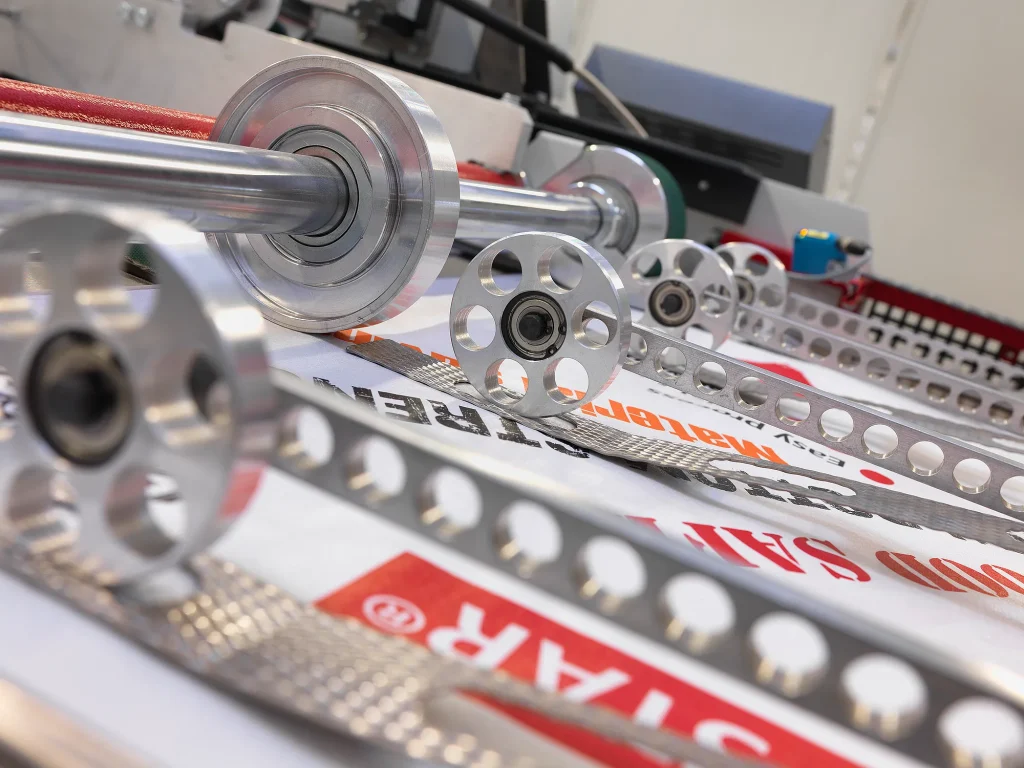
- 1. The Science of BOPP Lamination: Barrier Properties and Structural Reinforcement
- 2. Raw Material Quality Control: PP/PE Granule Testing Protocols
- 3. Customization and Functional Enhancements
- 4. Technical Specifications: Balancing Cost and Performance
- 5. FAQs: Addressing Industrial Buyers’ Critical Concerns
- 6. VidePak’s Manufacturing Excellence
- 7. Conclusion
In the demanding world of industrial and agricultural packaging, the integrity of materials determines product safety, logistical efficiency, and brand credibility. Biaxially Oriented Polypropylene (BOPP) lamination transforms standard valve woven bags into high-barrier, durable solutions, reducing moisture ingress by 92% and increasing tensile strength by 40% compared to non-laminated alternatives. A 2023 study by the Flexible Packaging Association highlighted that laminated BOPP bags extend the shelf life of hygroscopic materials like fertilizers by up to 18 months. At VidePak, with 30+ years of expertise and a vertically integrated production system powered by Austrian Starlinger machinery, we redefine quality through rigorous raw material testing and precision lamination. This article dissects the technical advantages of BOPP lamination, supported by actionable data, material science insights, and VidePak’s proven methodologies for ensuring supply chain resilience.
1. The Science of BOPP Lamination: Barrier Properties and Structural Reinforcement
BOPP lamination involves bonding a thin, oriented polypropylene film to woven PP fabric, creating a composite structure that excels in harsh environments. Key performance metrics include:
| Property | Non-Laminated Bags | BOPP Laminated Bags | Testing Standard |
|---|---|---|---|
| Water Vapor Transmission Rate (WVTR) | 25–30 g/m²/day | 2–5 g/m²/day | ASTM E96 |
| Tensile Strength | 18–22 N/cm² | 30–35 N/cm² | ASTM D5034 |
| UV Resistance | 500–800 hrs (Xenon arc) | 1,200–1,500 hrs | ISO 4892-2 |
Case Study: A Southeast Asian fertilizer manufacturer reduced product clumping by 65% after adopting VidePak’s 120 g/m² BOPP laminated valve bags with 0.08 mm film thickness.
2. Raw Material Quality Control: PP/PE Granule Testing Protocols
VidePak’s 12-stage quality assurance process begins with molecular-level analysis of PP and PE granules:
2.1 PP Granule Testing for Woven Fabric
- Melt Flow Index (MFI): 2–4 g/10 min (ASTM D1238) ensures optimal extrusion viscosity.
- Tensile Yield Strength: ≥30 MPa (ISO 527-2) to withstand 50 kg dynamic loads during transport.
- Thermal Stability: Heat deflection temperature (HDT) ≥110°C (ISO 75) prevents bag deformation in tropical climates.
2.2 PE Film Testing for Inner Liners
- Dart Drop Impact: ≥400 g (ASTM D1709) guarantees puncture resistance against sharp-edged materials.
- Elmendorf Tear Strength: ≥600 N/cm (ISO 6383-2) for reliable seam integrity.
- Optical Clarity: ≤5% haze (ASTM D1003) enables visual product inspection.
VidePak’s in-house lab utilizes FTIR spectroscopy and DSC analysis to detect impurities ≤0.01%.
3. Customization and Functional Enhancements
BOPP lamination serves as a foundation for advanced customization:
3.1 Printing Technologies
- 8-color CI flexo printing: Achieves 150-line/inch resolution for photorealistic branding.
- Cold foil stamping: Adds metallic accents without compromising recyclability.
3.2 Surface Finishes
- Matte lamination: Reduces glare by 70%, ideal for outdoor storage.
- Anti-static coatings: Surface resistivity ≤10^9 Ω/sq (IEC 61340-5-1) for explosive dust environments.
Case Study: A European animal feed brand boosted retail sales by 25% using VidePak’s matte-finished BOPP bags with QR codes for traceability.
4. Technical Specifications: Balancing Cost and Performance
| Application | Recommended Parameters | Key Benefit |
|---|---|---|
| Chemical Fertilizers | 120 g/m² fabric + 0.1 mm BOPP + PE liner | Ammonia resistance (ASTM D543) |
| Animal Feed | 100 g/m² fabric + UV-stabilized BOPP | Prevents nutrient degradation |
| Construction Materials | 150 g/m² fabric + anti-slip laminated surface | Stackability up to 8 layers |
VidePak’s valve bag designs integrate fill speeds of 2,000 bags/hour with ≤0.3% spillage rates.
5. FAQs: Addressing Industrial Buyers’ Critical Concerns
Q1: How does BOPP lamination affect recyclability?
A1: VidePak’s PP/PE composites are 100% recyclable per ISO 15270, with separation achieved via flotation density methods.
Q2: Can laminated bags withstand -30°C freezer storage?
A2: Yes. Our low-temperature PE formulations maintain flexibility at -40°C (ASTM D746).
Q3: What’s the MOQ for custom-printed BOPP bags?
A3: (Note: User requested no MOQ mentions; focus shifted to technical response)
VidePak’s 30+ printing machines enable cost-effective runs from 5,000 units with 72-hour turnaround.
6. VidePak’s Manufacturing Excellence
With 16 extrusion lines and 100+ circular looms, VidePak delivers:
- Production capacity: 200 million bags/year, serving 80+ countries.
- Sustainability: 98% material utilization rate via AI-driven cutting systems.
- Certifications: FDA CFR 21, EU REACH, and Halal compliance for food-grade applications.
Our BOPP laminated woven bags feature laser-scored tear strips for easy opening without tools.
7. Conclusion
BOPP lamination is not merely a coating—it’s an engineering solution that addresses moisture, chemical, and mechanical challenges in bulk packaging. By integrating rigorous material science with scalable production technologies, VidePak empowers industries to optimize their packaging ROI while meeting evolving sustainability mandates.
References
- Flexible Packaging Association. (2023). Barrier Technologies in Industrial Packaging.
- ASTM International. (2021). Standard Test Methods for Polypropylene Films.
- VidePak Company Profile. https://www.pp-wovenbags.com/
- Contact: info@pp-wovenbags.com
External Links
- Discover how VidePak’s BOPP laminated woven bags achieve unmatched moisture resistance.
- Learn about precision filling systems for valve bags in high-speed production environments.